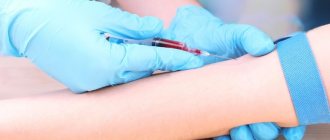The most common types of “pain” in children are abdominal pain, ear pain, and headaches. Often headaches are associated with a viral infection. In more than 90% of cases, the pediatrician can identify the cause of the pain after examining the child and reviewing his medical history. In-depth research is necessary in extreme cases; a headache rarely indicates a serious illness. Typically, a child will have a headache if he is hungry and will go away after eating, resting, and recovering from a viral infection. Paracetamol can relieve pain.
URGENT CARE
Call an ambulance if your child has a headache and:
- He cannot lift his head while lying on his back
- Temperature is more than 39 C and does not decrease after taking paracetamol
- Vomiting, but no stool upset; unnatural drowsiness
- Loss of coordination
THE DOCTOR'S CONSULTATION
Contact your pediatrician if:
- the child complains of a headache and has a fever
- headache occurred after a head injury
- A child under 4 years of age complains of headache
ATTENTION!
If headaches occur frequently (more than once a month); the child often wakes up with a headache; there are frequent signs of severe headache or vomiting - consult your pediatrician. We need to find out the reason.
| ASK YOURSELF A QUESTION | POSSIBLE REASON | WHAT TO DO |
| Did a child of the 2nd year of life fall or hurt himself, but did not lose consciousness? | Minor injury (falls common for this age rarely cause serious injury) | Create a calm environment for your child to sleep; give paracetamol. If the pain does not go away, continues for more than an hour, or gets worse, call an ambulance immediately. |
| Does your child have a fever, stuffy nose, runny nose, sore throat, sneezing, dry cough? | ARVI (cold); sore throat, possibly streptococcal | A headache often accompanies a cold, increasing general malaise. Call the pediatrician . Give paracetamol to reduce fever and relieve symptoms. |
| Does your child have a headache, often have a stuffy nose, runny nose, or pain in the nasal area? Does he sleep well? Irritable and lethargic? | Sinusitis; tooth disease | Talk to your child's doctor . He will examine the child and prescribe the necessary examinations. If the cause of the pain is sinusitis, treatment will be prescribed. If necessary, the pediatrician will refer the child to the dentist. |
| Does your child complain of prolonged, aching pain, a feeling of a dull “hoop” around the head? | Stress | Give paracetamol to reduce pain. If such cases recur, seek advice from your pediatrician . Try to eliminate the cause of stress, establish a proper daily routine |
| Does the headache occur when the child eats ice cream, drinks cold drinks, etc.? | Increased sensitivity to cold | Sometimes pain may occur when cold food touches the soft palate. This is not a dangerous condition. If it bothers you, avoid cold foods. |
| Does a headache occur when your child reads or looks at something at close range for a long time? Does he blink and squint frequently? Does his back and neck hurt after working at his desk? | Eye strain; furniture does not suit height | Talk to your child's doctor . He will examine the child and, if necessary, refer him to an ophthalmologist . Check whether the height of the chair or table is appropriate for the child's height. |
| Is your temperature moderate to high? Severe headache, vomiting? Drowsiness, disorientation? Are neck movements painful? (not always in children under 1 year of age) | Meningitis | Call an ambulance immediately |
| Are your headaches becoming more frequent and severe? Lost coordination? Do you vomit frequently? Does your child wake up at night with a headache? | Possible serious illness | Contact your child's doctor immediately . He will examine the child and prescribe the necessary examinations. You may need to consult a neurologist . |
FOR INFORMATION
Migraine in children
If the child has frequent headaches characterized by at least three of the following features: throbbing pain, usually one-sided; accompanied by nausea and/or vomiting; abdominal pain; the child complains of blurred vision, flashes before the eyes, numbness in the limbs; relief comes after sleep; there is a hereditary predisposition - this allows one to suspect migraine. Typically, migraine attacks in children are not very severe and are easy to treat. In more than half of children, migraines disappear after 10 years. Attacks can be triggered by hormonal changes, intolerance to any food, stress, and other reasons. The pediatrician will make a diagnosis and recommend treatment. Keeping a journal can help you identify triggers and avoid them. At the first sign of an attack, take the child to a quiet, darkened room and give paracetamol. If you reassure your child that headaches are not caused by a dangerous disease, attacks may become less frequent.
Pediatrician appointment prices:
| TYPES OF MEDICAL SERVICES | Cost, rub. |
| Examination of a child by a pediatrician to obtain a certificate + certificate | 1950 |
| Visit of a pediatrician, consultation at home (Moscow) | 5400 |
| Consultation with a pediatrician at home for the second child | 1950 |
| Patronage for a newborn / gymnastics and swimming at home (1 session, pediatrician Kapina A.V.) | 6300 |
“Throat and stomach hurt,” or what do you know about adenovirus
During seasonal ARVI, cough and sore throat are an “expected” phenomenon. But what if traditional respiratory symptoms are combined with diarrhea or vomiting? Perhaps it is an adenoviral infection.
Special signs
Adenovirus, unlike many respiratory viruses, affects not only the respiratory tract, but also the mucous membrane of the small intestine. In addition, the conjunctiva of the eye comes under attack.
It leads to:
- copious mucous discharge from the nose,
- sore and sore throat,
- cough (first dry, and later with sputum),
- symptoms of conjunctivitis, such as redness of the eyes, watery eyes, a feeling of dryness and “sand” in the eyes,
- as well as abdominal pain, diarrhea, vomiting
- and fever, the duration of which can reach 2 weeks.
Moreover, if intestinal symptoms may not develop during the entire infection, then the “characteristic” eyes are an important distinguishing feature of the adenovirus.
Where can you get infected?
Adenovirus is extremely infectious and resistant in the external environment. And the source of infection can be sick people or household items on which the virus remains active for up to 8 days.
You can become infected:
- when the patient coughs and sneezes,
- consuming food prepared without sanitary standards (thorough hand washing is required),
- and even through contact with the feces of an infected person (for example, when changing a diaper for an infected child).
You can “catch” the virus even in a swimming pool if the water is not properly disinfected. And, obviously, this viral infection is not uncommon in children's groups.
How dangerous is this?
Adenovirus infection, in most cases, does not pose a threat to health or life. And it usually ends without consequences after 7-14 days. Whereas in weakened patients, the infection can drag on and reach 6 weeks.
This same category of patients most often develop complications in the form of:
- pneumonia,
- otitis,
- bronchospasm
- severe keratoconjunctivitis.
However, Rospotrebnazor experts note that complications of adenoviral infection are always associated with the addition of pathogenic bacterial flora (staphylococci, streptococci and others).
How to identify adenovirus
The classic symptoms of adenoviral infection, as a rule, do not require additional tests. And the help of laboratory diagnostic methods is mainly resorted to at the earliest stage of the infectious process or in case of doubt about the diagnosis.
The most informative analysis in this case is PCR diagnostics of the material (throat swab or feces) for adenovirus.
The study can be ordered separately or immediately in combination with other ARVI viruses (for example, “ARVI-Screen”), which will allow you to immediately carry out a differential diagnosis. True, the PCR technique sharply loses its reliability if treatment, both local (rinses, sprays) and general, has already begun.
A blood test for IgA antibodies to adenovirus does not have these shortcomings.
They appear in the blood during the initial period of the disease, and continue to circulate for some time after recovery.
However, children, as you know, “don’t like” blood tests, so this examination format is more suitable for adults.
Pediatricians:
Avzalova Daria Evgenevna
Pediatrician, neonatologist
Experience: 18 years Reviews: 7
Call to home
Barzenok Tatyana Arsenyevna
Head of the pediatric department, pediatrician of the first category
Experience: 28 years Reviews: 17
Make an appointment Call at home
Belousova Elena Sergeevna
Pediatrician, nephrologist
Experience: 18 years Reviews: 14
Make an appointment Call at home
Bykov Mikhail Viktorovich
Pediatrician of the highest category, ultrasound diagnostics specialist, Candidate of Medical Sciences
Experience: 25 years Reviews: 3
Make an appointment Call at home
Kazakova Liliya Valentinovna
Pediatrician, neonatologist, head of the breastfeeding consultant service
Experience: 28 years Reviews: 31
Make an appointment Call at home
Sedova Maria Sergeevna
Pediatrician, allergist-immunologist
Experience: 20 years Reviews: 30
Make an appointment Call at home
Sergienko Tatyana Yakovlevna
Pediatrician, pediatrician on duty at the pediatric hotline
Experience: 39 years Reviews: 21
Make an appointment
What do parents need to know about meningitis?
28.06.2018 Meningitis-
This is an inflammation of the soft membranes of the brain and spinal cord caused by various pathogens.
Causes of meningitis:
· Viruses (eg, measles, chickenpox, mumps). · Bacteria (for example, meningococcus, pneumococcus, Haemophilus influenzae and others). · Fungi.
All types of meningitis have symptoms that are common to common infections. It is almost impossible to identify the cause of the disease without laboratory diagnostics.
Meningococcal infection
is one of the most pressing problems, with approximately half a million cases reported annually worldwide, one in ten of which are fatal. Death in 63% of cases occurred on the first day from the onset of the disease, even with timely seeking medical help, most of them were children under 2 years of age. In 20% of cases after meningococcal infection, the outcome was disability (loss of hearing, vision, mental retardation, amputation of limbs).
Meningococcal infection
is an acute infectious disease caused by the bacterium meningococcus.
The disease can manifest itself in different ways:
- Asymptomatic carriage (meningococci can inhabit the human nasopharynx and any of us can be a potential carrier; carriage is more common in adults and adolescents, who are the source of infection for children),
- Mild respiratory infection (nasopharyngitis),
- Severe forms of infection (meningitis, sepsis).
Who can get sick?
Meningococcal meningitis can occur in any person - a child of the first year of life, a teenager and an adult. Meningococcal infection is especially dangerous for children. In more than 90% of cases, healthy children without additional risk factors get sick; the incidence of children under 4 years of age is 22 times higher than in adults!
Sources of infection.
The disease spreads from person to person through coughing, sneezing, kissing, and even talking or sharing cutlery. Since infection occurs through close contact, the main source of infection for young children is their parents, brothers and sisters, relatives, as well as other children in nurseries and kindergartens.
Risk factors for meningococcal infection:
- child's age up to 4 years;
- visiting a kindergarten or school;
- cramped living conditions: in a family, in dormitories, barracks, boarding schools, orphanages, sanatoriums, pioneer camps, etc.;
- external factors leading to a weakening of the immune system (including stress, hypothermia, overwork);
- congenital and acquired disorders of the immune system, damage or absence of the spleen;
- traveling to places where meningococcal infection is widespread (some African countries, Saudi Arabia).
1. Fever.
One sign of meningitis is a fever that starts suddenly. The child begins to tremble and complains that he is cold all the time.
The patient's temperature quickly rises, which can be difficult to bring down. But since this symptom is a sign of many diseases, you should also pay attention to other features in the change in the child’s condition.
2. Headache.
Headache with meningitis is often not just severe, but almost unbearable. In this case, the pain often also constrains the patient’s neck, but due to the fact that the patient’s head literally “splits,” he may not pay attention to it.
In newborns, a characteristic sign is also a bulge in the area of the large fontanelle and a high-pitched cry.
3. Double vision.
A patient with meningitis cannot focus his vision, which is why the image in his eyes constantly doubles.
4. Abdominal pain, nausea and vomiting, sudden loss of appetite.
5. Photosensitivity.
Another sign of meningitis is a fear of bright light, which can cause the child's eyes to water, as well as worsening nausea and headaches.
6. Stiff neck.
A child with meningitis is in a special recognizable position: lying on his side with his head thrown back and legs bent. When he tries to straighten his neck, he often fails.
7. Inability to straighten your legs.
Even if it is possible to tilt the child’s head to the chest, his legs immediately bend at the knees, which are impossible to straighten in this position. This phenomenon is called upper Brudzinski syndrome.
With meningitis, Kernig's syndrome also appears along with it. With it, it is impossible to straighten the leg at the knee if it is raised approximately 90°.
8. Skin rashes do not turn pale.
With meningitis, skin rashes are also possible. A simple test can help distinguish them from rashes that are not associated with meningitis. Take a glass of clear glass, apply it to the rash and press so that the skin under the glass turns pale. If the rash also turns pale, it means there is no meningitis. If the rash has retained its color, you should be wary.
How to protect your child from meningococcal infection?
It is impossible to completely protect a child from contact with infections. Therefore, vaccination is carried out to protect against infectious diseases. A child can be vaccinated against meningococcal infection in the first year of life (from 9 months).
Children from the risk group are subject to vaccination (see above).
Facts about meningitis vaccines.
Meningococcal vaccines do not contain live bacteria and cannot cause meningococcal disease in unvaccinated people.
Vaccines create an immune response even in young children, which will protect the child from a dangerous infection as early as possible.
The vaccine provides a stable immune “barrier” against meningococcal infection 10 days after vaccination.
The vaccine also reduces the carriage of bacteria in the nasopharynx. By vaccinating yourself, adults can prevent transmission of bacteria to young children, who are at particular risk!
There are several types (serotypes) of meningococcus, the most common of which are A, B, C, Y and W. That is why it is advisable to choose vaccines that include the maximum number of meningococcal serotypes for more reliable protection against infection. The Menactra vaccine, approved in the Russian Federation, meets these requirements.
, providing protection against serotypes A, C, Y, W-135 (made in the USA).
Vaccination schedule
from 9 months. up to 23 months twice, with an interval of at least 3 months; from 2 years to 55 years once. Revaccination is not required.
The Baxero vaccine can protect against serotype B, which is widespread in Russia.
, but the drug is not registered in the Russian Federation. Maybe someday it will appear here too, but we shouldn’t expect it in the coming years. Two European countries have included Bexero in their national vaccination schedules - the UK and the Czech Republic. Vaccination of Russians with this drug is possible in European countries at their own expense (vaccine tourism).
In the pediatric department of Clinical Hospital No. 122, vaccination against meningitis is carried out by the head of the pediatric department, pediatrician, pulmonologist L.V. Marshalkovskaya. and pediatrician, allergist-immunologist Pereverzeva Yu.S.
The material was prepared by a pediatrician, allergist-immunologist
Pereverzeva Yulia Sergeevna
.
To prepare the material, the following sources were used: Pediatrics according to Nelson, 17th edition, 244, p. 398, Internet sources: https://www.privivka.ru/meningit, https://www.adme.ru.
Regarding vaccination against meningitis
at the pediatric department of clinical hospital No. 122
please contact us by phone:
+7(812)363-11-22;
+7(812) 558-99-76,
Pediatric department









